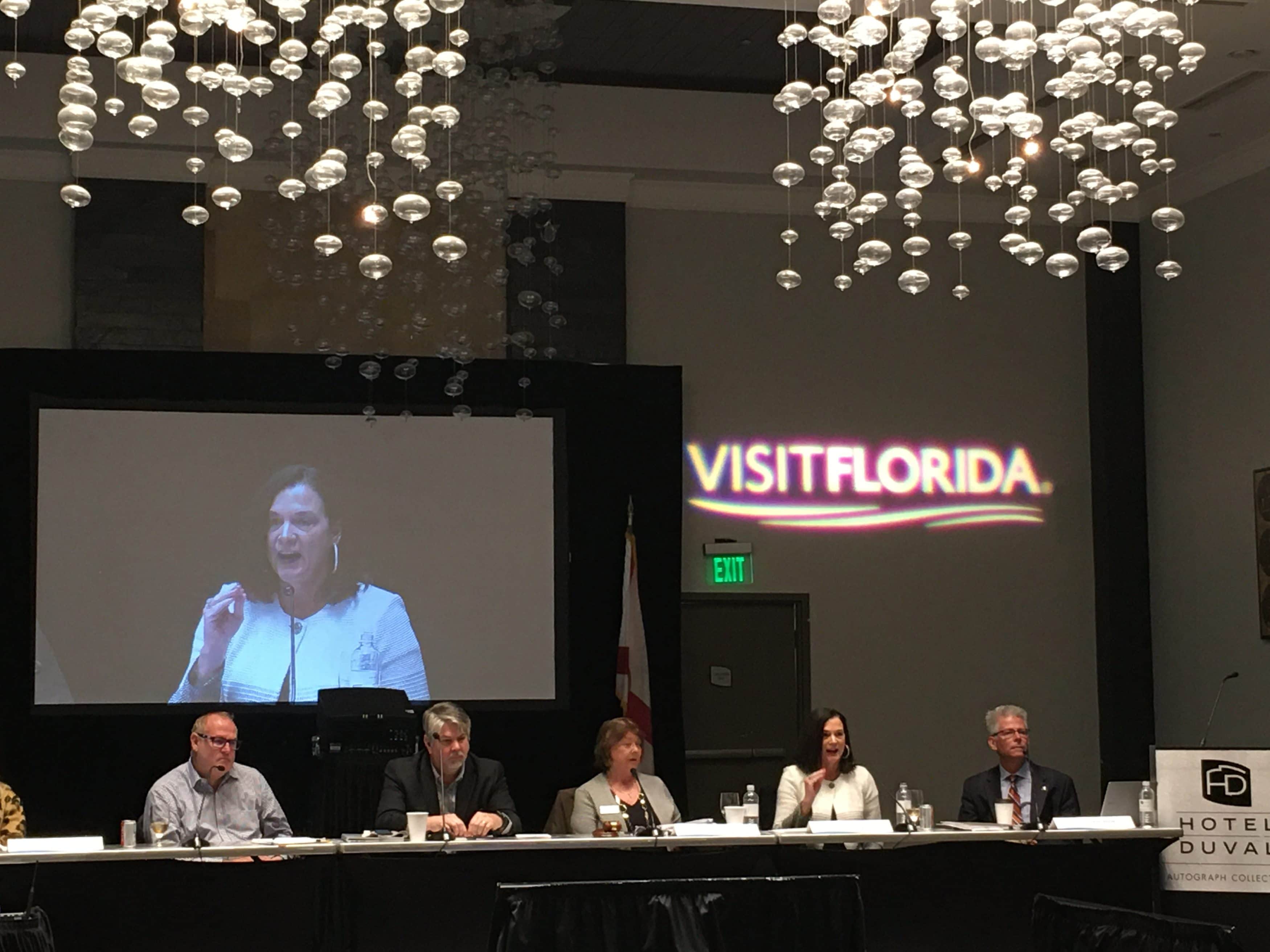
The first VISIT FLORIDA board meeting of the new year was laden with context, with real questions raised (again) in the Capitol about the tourism agency’s future.
Gov. Ron DeSantis and Sen. Bill Galvano want to keep it around, a point they made during “Tourism Day” this week.
House Speaker Jose Oliva is unconvinced, saying the agency serves a redundant purpose at best.
And VISIT FLORIDA CEO Dana Young notes that the last cut, to a $50 million annual budget, is still being processed by the agency.
Under the microscope, the board convened Thursday morning at the Hotel Duval, a short walk from the Capitol where the agency’s future will be decided in March.
Despite the doom and gloom of the news cycle, the mood mixed practiced optimism with the reality that funding is not assured past this fiscal year.
“Yesterday was one of the best tourism days we’ve had in a long time … wonderful remarks from the Governor, the Senate President,” said Chair Virginia Haley.
Rep. Lorraine Ausley, a Tallahassee Democrat supportive of the program, described the ongoing pressures of fighting for tourism.
“An $88 billion industry, return on investment is $2 for every dollar,” Ausley said. “Every single state is salivating when we have this fight year after year.”
“I know everybody’s holding on until this year’s over,” Ausley said, with the hope of “starting fresh and new with new leadership.”
“We are on the right side of this. The facts are on our side, the numbers are on our side,” Ausley noted.
The agency continues to deploy its game plan despite reduced resources.
With a decreased budget, targeted media and “economies of scale” are key. Expected: a decrease of 25 percent of paid media impressions. Earned media: down 33% year over year.
This could impact performance. Per a survey of “intentions to visit Florida,” people who saw marketing in FY 18-19 were 13 percent more likely to visit the state in the next 12 months than people who don’t. Those considering a visit in the next 24 months: up 9 percent.
All told, in FY 18-19, digital advertising drove 1.5 times as much travel for those who saw it versus those who didn’t.
The data, board chair Haley noted, contradicted the narrative that Florida sells itself.
Examples of current digital ads include spots in Boston, Chicago, and Toronto, contrasting Florida’s balmy weather with those frosty climes, reminiscent of a classic 1979 spot predicated around the “when you’ve got it bad, we’ve got it good” theme.
Carol Dover, the Public Affairs chair, said “this [funding] decision won’t be made until the end, unfortunately.”
“Don’t go home and lay on your laurels … get your local folks to call in and support,” Dover added. “The numbers are on our side. Everything is on our side.”
Dover urged Visit Florida employees to “think of something,” a “thirty-second video” that could sell lawmakers.
“They’d rather see a 30 second video than a 200 page document,” Dover noted.
Young noted, in her remarks, that she was pointing out growth sectors in pitches to legislators, noting that increases in everything from “millennial adventure seekers” to Canadians and international visitors mean more revenue for the state.
One in four international visitors comes to Florida.
“Money for our general fund,” Young said, “things supported by dollars from tourists.”
The legislators’ “jaws drop,” Young added.
Young, a former Senator, has expressed optimism in the lobbying effort in the Capitol. At the first board meeting of the new year, she doubled down.
Young also urged people to contact local Chambers of Commerce to pressure legislators, with the goals being an eight-year authorization and restored full funding.
“We just can’t let up,” Young said. “Just because we had a great day with the Governor and the Senate President and the Lt. Gov and the next two Senate Presidents, doesn’t mean we can just sit back.”
Young also notes that numbers will decline, given diminished resources.
“Anybody who questions the reality of what happens when budgets are cut on the state level, look at Colorado. It took them decades to recover,” Young said.
Tourism directors from Georgia and South Carolina “are hoping we get cut.”
“They will get the money that’s not coming here,” Young noted.



